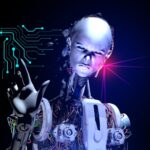Introduction:
In the dynamic backdrop of technological changes, technologies like Digital Twins are going to be highly disruptive. It involves the creation of a virtual twin of any physical entity for better monitoring, analysis, and optimization.
What are Digital Twins?
The digital twin is the virtual equivalent of any physical entity, system, or process, re-created with the use of real-time data and running of advanced simulation techniques. These virtual twins range in all domains, from something minute like mechanical objects to highly connectivity burdened systems like manufacturing plants or even entire cities. They are replicas of the real world in complete form, allowing monitoring and optimization in a virtually existing environment like a simulator.
The Genesis of Digital Twins:
The term, first used at NASA during the Apollo missions, turned into mainstream use with IoT, AI, and advanced simulations. Digital Twins find their adoption in almost all verticals today, be it Manufacturing to Health and Urban planning.
Applications Across Industries:
•Manufacturing
Digital Twins improves Production and Efficiency by running the production lines virtually thereby optimizing the workflow of the company. It also predicts equipment failure and reduces downtime.
Digital replicas of organs and systems for inilio improvement of diagnostics and treatment. For example, the Digital Twin of a patient’s heart can simulate surgeries with doctors to provide personalized health solutions.
•Urban Planning
Smart cities deploy Digital Twins for the purpose of urban planning and urban management. Simulations run on traffic patterns and energy consumption enable data-driven decisions to enhance the quality of life for residents.
• Automotive
Digitally twinned, the automotive industry designs and tests new vehicle models. With a virtual simulation ability, an engineer could check on performance and safety, barrel up innovation, and bring down costs.
Challenges and Future Directions:
Challenges include data security, integration complexities, and associated high costs. However, the advancement of AI and IoT is taming all these challenges, and the Digital Twins are becoming more accessible.
The future belongs to Digital Twins. They will further refine themselves with evolving technology, driving industries toward efficiency and innovation. The step into the use of Digital Twins will be a step into the future where data-driven insights turn into smarter decisions and better products.







